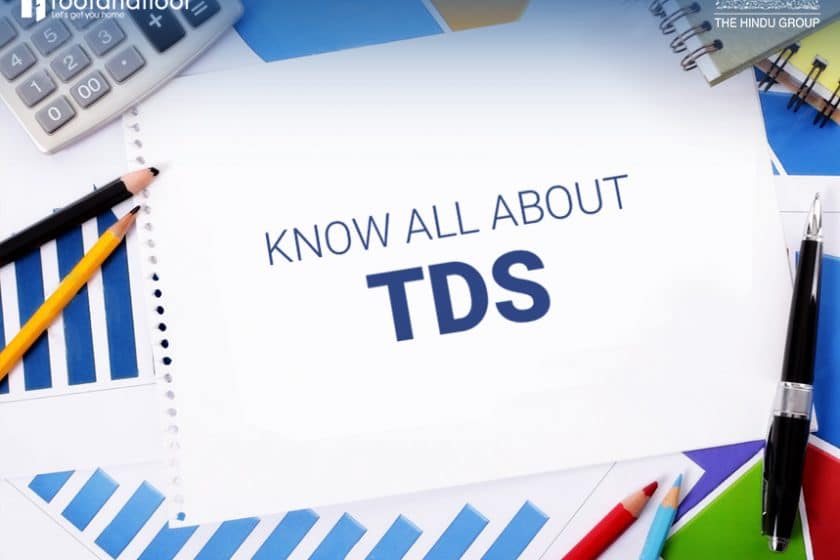Consider this. Nearly 35% of the total property cost is a combination of taxes paid by both the buyer and developer.
In this world nothing can be said to be certain, except death and taxes.” – Benjamin Franklin.
That is probably the most famous quote on taxes ever. We can try to evade it (and we suggest you don’t), but paying taxes is one of those things that we just have to do in life.
The term ‘tax deducted at source’, is commonly known as TDS. Now, you may have seen it in your salary slips, but did you know that you are required to deduct it for your property as well? Yes, you read it right! In fact, not doing so might burn a deeper hole in your pocket. Find out why TDS matters when it comes to buying your home.
The most recent provision related to TDS for immovable property came into effect on 1 June 2013 in the form of the Section 194-IA of the Income Tax Act, 1961. It requires you to produce TDS documents on transfer or sale of immovable property to register your property.
According to the Finance Budget 2013-14, a TDS of 1% is levied on properties sold at Rs 50 Lakh and above. For instance, if Rohit buys a property for Rs 60 Lakh, then he will have to deduct TDS of 1% of this total amount, i.e., Rs 60,000.
So, why is TDS charged?
Eradicating black money from the nation has been one of the major agendas of the Indian government. And considering the relationship between real estate and black money, this sector is being closely monitored.
The government has, thus, made it mandatory to have TDS documents at the time of property registration.
Who should deduct TDS?
Any person buying a property worth Rs 50 Lakh or more is mandated to deduct TDS. Remember the sale of agricultural land is exempted from the applicability of TDS.
When is it required?
During the registration of the property, TDS documents on transfer or sale of immovable property are required.
What is tax deduction rate?
The rate at which the buyer needs to deduct tax is 1%, and it may go up to as high as 20% if the seller does not disclose his PAN details. Click To TweetDocuments
Form 26QB: The online form available on the TIN website for furnishing information regarding TDS on a property is termed as Form 26QB.
TDS Certificate: Form 16B is the TDS certificate to be issued by the deductor (Buyer of property) to the deductee (Seller of property) in respect of the taxes deducted and deposited into the Government Account.
How to pay TDS?
The buyer of the property must furnish all details regarding the transaction and TDS on the property in Form 26QB through NSDL e-Gov’s TIN website. Form 26QB is required to be submitted online.

Mode of payment: Offline and online
After successfully providing details of the transaction, the payment can be made through both online and offline mode. With the printout of the acknowledgment slip, there are two options available to you:
Online: Deductor is directed to the bank’s website (through e-tax payment option) where he can make the payment.
Offline: The buyer can opt for an offline mode of payment by taking a print of the duly filled form and submitting the same along with the TDS amount at the authorised bank branches.
What are the penalties for not deducting TDS?
Below are different scenarios along with their respective penalties.
- If the tax is not deducted at all: Interest will be levied at 1% for every month or part of a month for a delay in deduction. The interest will be levied till the month when it is actually deducted.
- Late payment of TDS: Interest at the rate of 1.5 % is charged for every month on the account of late payment.
- If the seller doesn’t have a PAN card or if it is not valid, then the penalty may exceed to 20%. Hence, always take copy of the PAN card and file the return. The online form does not accept the form without PAN details. Hence, one has to mandatorily obtain PAN from the seller for filling form 26QB.
A new addition
To ensure increased transparency and professionalism in the sector, a new addition was introduced in the Finance Act, 2017.
[button-blue url=”” target=”” position=””]Under Section 194-IB of the Income Tax Act, tenants paying monthly rentals of over Rs 50,000 will also have to mandatorily deduct TDS at 5%.[/button-blue]The move was, essentially, targeted on the landlords receiving high rental income and not disclosing it. Now, they would be forced to report the actual rental income on their tax returns to claim the benefit of the TDS amount.
Things to remember
The buyer has to obtain a challan for the payment and issue Form 16B to the seller (i.e. certificate of deduction of tax at source, section 194 IA). The form should be given within 15 days from the due date of submission of the challan.
The TDS certificate can be downloaded from TRACES
The buyer is required to quote his or her PAN number and the seller’s PAN number.
The TDS deducted by the buyer at the time of payment to the seller has to be deposited within seven days from the end of the month in which the deduction has been made.
Still got doubts? Don’t worry! Drop in your questions in the comment section below and we will resolve your queries at the earliest.






